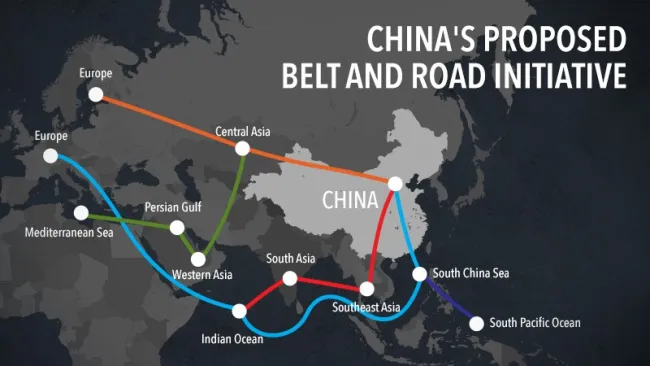Understanding China's Belt and Road Initiative: Goals, Impact, and Key Challenges
Launched by China in 2013, the Belt and Road Initiative (BRI) is one of the most ambitious infrastructure and economic development projects in modern history. Spanning across continents and oceans, it aims to revive ancient trade routes while establishing new global connections. Below is an in-depth exploration of the BRI’s structure, objectives, and the debates surrounding it.
The Origins and Structure of the BRI
The BRI draws inspiration from the ancient Silk Road—a vast network of trade routes that connected Asia, Europe, and Africa more than 2,000 years ago. Today, the BRI is reimagined in two main components:
- The Silk Road Economic Belt: Overland corridors that connect China to Central Asia, Europe, and the Middle East through railways, roads, and pipelines.
- The 21st-Century Maritime Silk Road: A network of sea routes linking Chinese ports to Southeast Asia, Africa, and the Mediterranean.
Together, these routes aim to foster trade, investment, and cultural exchange across 152 countries and 32 international organizations, impacting 60% of the global population and nearly one-third of the world’s GDP.
Economic Impact and Global Reach
The BRI focuses on five key areas: policy coordination, infrastructure development, trade enhancement, financial integration, and cultural exchange. Central to this vision are large-scale infrastructure projects, such as ports, railways, and power plants. According to the World Bank, these projects could reduce travel times by 12%, increase trade by up to 9.7%, and lift 7.6 million people out of extreme poverty.
In 2022, trade between China and BRI countries reached nearly two trillion dollars, further highlighting the initiative’s significant economic impact.
Opportunities and Risks
Opportunities
- Economic Growth: Improved infrastructure can open new markets, lower trade costs, and stimulate local economies.
- Global Connectivity: By bridging gaps in transportation and energy networks, the BRI offers a platform for greater multilateral cooperation.
Risks
- Debt Sustainability: Concerns have been raised over the financial sustainability of countries participating in the BRI, especially those with limited fiscal capacity.
- Environmental and Social Impact: Large-scale projects carry the risk of environmental degradation and the displacement of local communities if not properly managed.
- Geopolitical Tensions: The BRI has attracted criticism due to China’s increasing influence. For example, Panama recently decided not to renew its 2017 BRI agreement, citing sovereignty concerns related to the Panama Canal and the management of Chinese-operated ports.
A Changing Landscape
The BRI is a dynamic and evolving initiative. Recent developments, such as Panama’s decision to withdraw, highlight the complexities of balancing national interests with international partnerships. In response, the World Bank has emphasized the importance of transparency, debt management, and environmental safeguards to ensure the BRI’s long-term success.
Conclusion
The Belt and Road Initiative is an ambitious effort to reshape global trade and development. While it offers significant transformative potential, its success will depend on overcoming financial, environmental, and governance challenges. As countries like Panama reassess their participation, the BRI’s ability to adapt to shifting geopolitical priorities will be tested.
For further insights into BRI projects and analysis, consult the World Bank’s reports or CGTN’s exploration of its historical roots.
